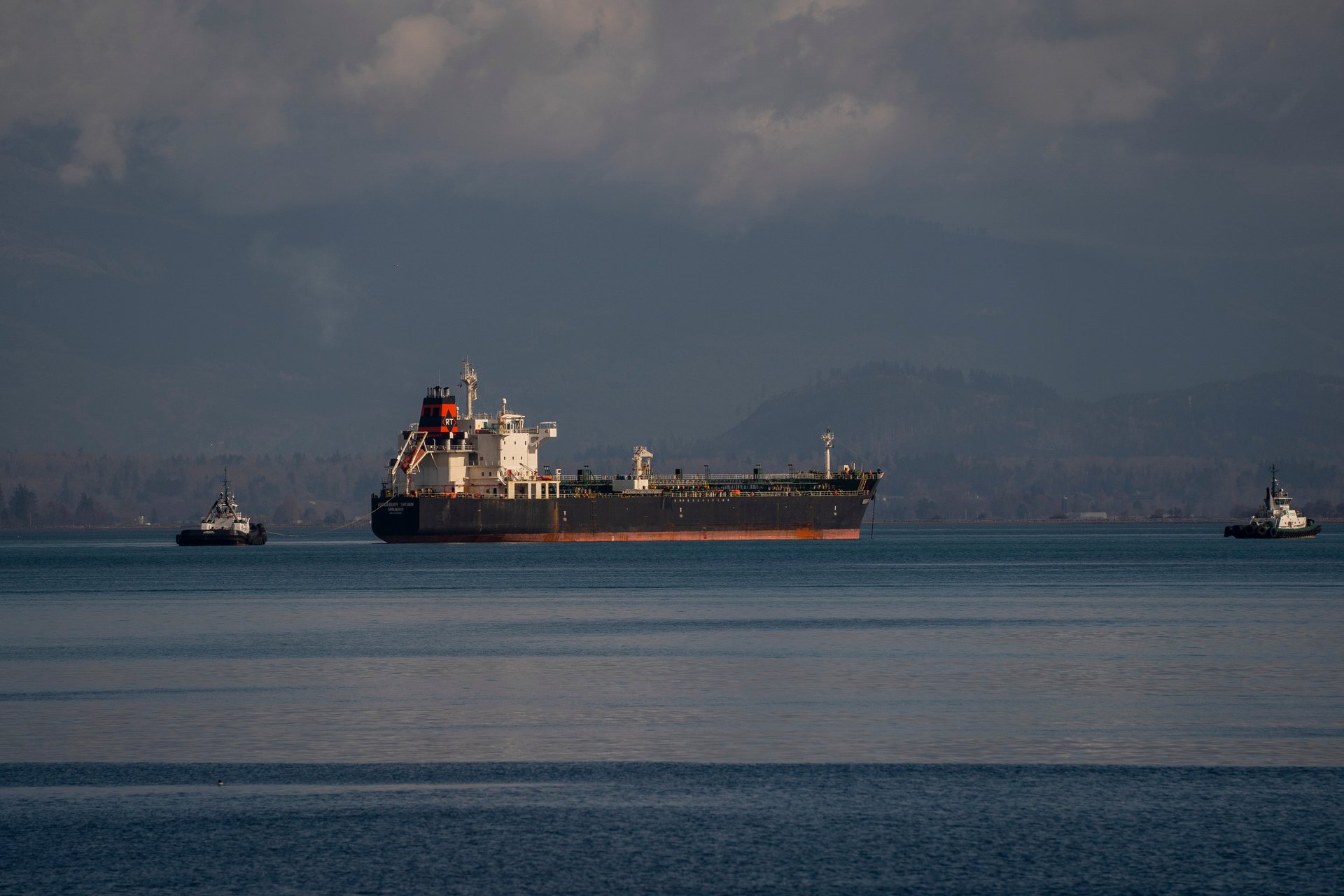Russia is amassing a shadow fleet of tankers to avoid EU oil sanctions
A flurry of unnamed buyers bought aging oil tankers, with as many as 100 ships joining the ranks of a Russian shadow fleet

Russia has spent the last few months amassing a scrappy fleet of over 100 tankers to cart its oil to willing buyers, hoping to defy the EU sanctions that went into effect on Monday (Dec. 5).
The shipping industry refers to the Russian tankers as a “shadow fleet.” An analyst for Braemar, a shipping broker, told the Financial Times that a spike in anonymous tanker sales to unnamed and new buyers was likely sending ships to Russia.
The shadow fleet, sourced from the Middle East, Turkey, and Southeast Asia, was described by one shipbroker as “vintage,” old and rickety vessels, plucked from near-retirement for the lucrative oil smuggling market. A fleet of 100 isn’t large enough to carry even half of Russia’s oil exports, which are critical to the country’s finances.
Russia has been building this fleet in anticipation of the double blow that the US and EU inflicted on its oil exports. The EU sanctions package bans imports of Russian oil by sea. The US-led price cap limits Russian oil to a maximum price of $60 per barrel.
How do the EU sanctions work?
EU-flagged ships are no longer allowed to carry Russian crude. With over half of Russian oil exports carried by Greek-owned ships, the ban creates a huge shortfall of ships to transport Russian oil.
But the sanctions reach beyond EU-flagged ships by limiting access to maritime services from European companies, including maritime insurance. The companies providing most of the world’s maritime insurance are based in the UK or the EU. They cover about 90% of the world’s ships, meaning the ban could be applied to most of the world’s oil shipments. Ships that are uninsured—against collisions or oil spills—are not allowed to dock in most ports inside and outside the EU, including in India and China.
If non-EU flagged tankers are caught carrying sanctioned Russian crude, the EU will withold insurance and other maritime services from them for 90 days. (This penalty was reduced from the lifetime ban that was originally proposed, in a concession to Greece, since Greek-owned ships move large volumes of Russian oil, and the US, which wants to limit the impact of the bans on the wider economy.)
As existing shipping companies stop carrying Russian oil in response to the sanctions, Russia’s shadow fleet would glide into this gap. The fleet would not be answerable to EU rules, and would hold Russian insurance. So far, Indian and Chinese ports accept most but not all Russian maritime insurance. Some Asian companies have likewise cropped up to cover ships carrying Russian cargo.
How oil is smuggled
At the moment, Russian crude is typically sold to countries such as China, India, and Turkey, reflecting a deep shift since the war in Ukraine from EU to non-EU buyers.
Windward, a shipping research firm, analyzed ship movements in August to track how tankers smuggle oil from Russia. Its analysts found tankers leaving Russian ports on aimless and illogical voyages to the mid-North Atlantic, a quiet patch of sea just outside the EU’s jurisdiction, then going dark by turning off their tracking devices, before returning to their ports of departure lighter on the draft. A trip with no destination port indicates a ship-to-ship transfer, in which cargo is off-loaded in the middle of the ocean outside the view of regulatory authorities.
Some tankers tampered with their AIS transmitters, an automatic identification system used industry-wide. This helped obfuscate the trail of their activities. Other tankers went on long, looping voyages around South Africa’s Cape of Good Hope, circumventing checkpoints at Gibraltar or the Suez Canal that may catch their cargo of sanctioned Russian oil. Still more tankers became floating storage, receiving oil from one ship, then drifting in the Atlantic for a month or two, waiting for the oil to be picked up by a third vessel.
With tanker rates skyrocketing to up to four times that of the pre-war rates, companies operating tankers on the gray market can earn up to $350,000 a day, a shipbroker interviewed by DW, the German broadcaster, estimated. The limited, 90-day ban from EU maritime insurance as a penalty if caught, combined with the strong financial rewards for successful deliveries of oil, may mean that existing smuggling networks will continue to back up Russia’s shadow fleet.
Will Russia’s fleet be enough to circumvent EU sanctions?
In 2021, Russia produced 4.7 million barrels per day of crude oil, according to the International Energy Agency (IEA). To keep exports flowing at full pace would require more than 240 ships, an analyst at Rystad Energy told the Financial Times, more than double the 100 ships Russia is believed to have in its shadow fleet. Without sufficient ships, Russia will face a crude bottleneck that will hit its finances. Based on IEA analysis, in 2021, oil and gas contributed 45% of Russia’s budget.
